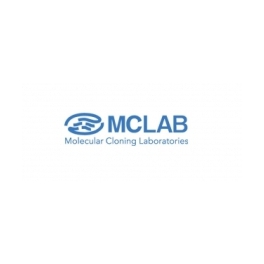 View full size
View full size
- Nucleic Acid Analysis
- Protein Analysis
- Biochemical Reagents
-
Enzymes
- Thermophilic DNA Polymerases
- Mesophilic DNA Polymerases
- Restriction Endonucleases
- Reverse Transcriptase and RNA Polymerases
- DNA/RNA Ligases
- RNases
- Proteases
- Nucleases
- Kinases
- Phosphatases and Sulfurylases
- DNA Repair Proteins
- Single-Stranded DNA Binding Proteins
- Chaperon Proteins and Disulfide Bond Isomerase
- Others
- Gene editing
- Molecular cloning
- Clinical diagnostics
- Human Identification STR kits
- Laboratory instruments
- Software
- A&A Biotechnology
- AdvancedSeq
- BioDynami
- Plant Cell Technology
News
-
XXXV. Izakovičov memoriál 2025
We are pleased to announce our participation in the prestigious XXXV. Izakovič Memorial 2025, which will take place on October 8–10, 2025 at the Grandhotel Praha, Tatranská Lomnica. The Izakovič Memo...
Read more -
1st Czechoslovak Congress of Medical Genetics 2025
In the spring, we will participate in the 1st Czechoslovak Congress of Medical Genetics, which will take place from April 2–4, 2025, at the Cultural and Congress Center Elektra in the spa town of Luha...
Read more -
RANK 2025
Visit us at the 19th edition of the RANK 2025 conference, which will take place on March 19th and 20th at the Zlatá Štika Hotel in Pardubice. The conference is organized by the Czech Society of Clinic...
Read more
 View full size
View full size
Description:
Fpg (also known as Formamidopyrimidine DNA glycosylase, Mut M, FAPY DNA Glycosylase, and 8-oxoguanine DNA glycosylase) participates in the base-excision (BER) pathway of DNA repair enzymes and acts both as a N-glycosylase and an AP-lyase. The N-glycosylase activity releases damaged purines from double stranded DNA, generating an apurinic/apyrimidinic (AP site). The AP-lyase activity cleaves both the 3′ and 5′ phosphodiester bonds at the AP site, producing a 1 base gap in the DNA and 3′ and 5′ phosphate termini. Bases recognized and removed by Fpg include 7, 8-dihydro-8-oxoguanine (8-oxoguanine), 8-oxoadenine, fapy-guanine, methy-fapy-guanine, fapy-adenine, aflatoxin B1-fapy-guanine, 5-hydroxy-cytosine and 5-hydroxy-uracil
Application:
- DNA Nicking
- DNA Repair
- Nick Translation
Source:
A recombinant E. coli strain carrying the cloned fpg gene.
Specific Activity: 20,513 U/mg
Supplied With:
10X Fpg Buffer
Incubate at 37°C
10X Fpg Buffer:
100 mM Bis-Tris-Propane
100 mM MgCl2
10 mM DTT
1 mg/ml BSA
pH 7.0 @ 25°C
Supplied in:
20 mM Tris-HCl
50 mM NaCl
1.0 mM DTT
0.1 mM EDTA
50% glycerol
pH 8.0 @ 25°C
Unit Definition:
One unit is defined as the amount of enzyme required to cleave 1 pmol of a 34mer oligo-nucleotide duplex containing an 8-oxoguanine base paired with a cytosine in 1 hour at 37°C in a total reaction volume of 10µl in reaction buffer.
Recommended Storage Condition: -20°C
Cart
Payment gate



